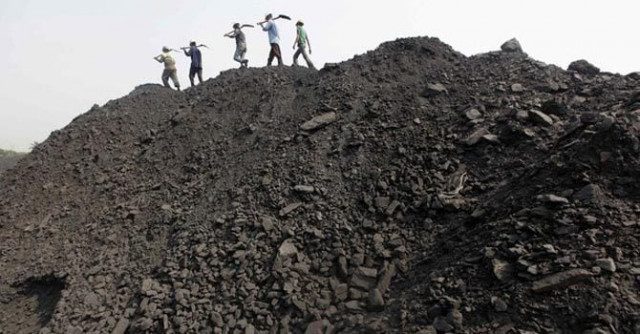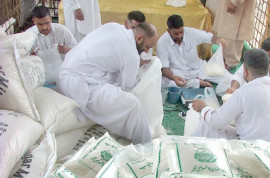
However, the project will only change the fate of the residents of Thar as much as Sui Southern Gas project changed the fate of people of Sui, said lawyer and environmental activist Qazi Ali Athar.
Backstage: Govt introduces mining ordinance
He was speaking at a session, titled 'National Consultation on the Mining Sector in Pakistan', arranged by Human Rights Comminsion of Pakistan (HRCP) at Beach Luxury hotel on Thursday. The session raised issues of labour, environment, sustainable development, law and socio-political infra-structure in the mining sector.
Thar coal project
The coal project in Thar, with coal deposits spread over 10,000 square kilometres, is larger than Thar and it is a part the China-Pakistan Economic Corridor, according to a paper, titled 'The Impact of the Coal Mining Project on Tharparkar and its Communities'.
The research has been conducted by city planner and social researcher Arif Hassan, Rural Development Expert CEO Dr Sonu Khangharani, Mansoor Raza Kailash and three others who wished to remain anonymous.
"Historically, Tharparkar has had a subsistence pastoral economy with agriculture, which is heavily dependent on erratic rainfall. Pastoral activity is dependent on the range land [gowcher] which in seasons of drought has difficulty in supporting the animal population," reads the paper.
The paper explained that coal mining is done through pits and the coal deposit begins at about 80 feet below the ground level. "After the extraction of coal, the excavated earth will be put back into the pit. However, after the extraction of coal, the pit cannot possibly be fully filled. Also, the refilled area will be completely barren for the foreseeable future and perhaps, unless cared for with much attention and money, for all [the] times to come," it states.
"The coal excavation will also encounter rain and deep water aquifers that will have to be drained into the natural depressions or especially constructed ponds. In the result of this, the natural water bodies will be polluted and large tracks of gowcher land will be occupied for pond building," it points out.
As the excavation expands, the area required for water disposal will also need to be expanded and this will impact more communities, the paper states.
Arif pointed out that the technology of the coal project will become obsolete in 30 years and the Chinese plants producing machinery for this technology will shut down by 2018. "What will happen then?" he asked.
Land grabbing
A member of HRCP and resident of Nagarparkar, Kamrad Heero Kolhi, told the session that the cases of land grabbing in his area are much higher than those in Karachi.
Resource management: CM for autonomous authority to lease mines
He pointed out that about 90% of the land in Tharparkar belongs to the Hindus. However, whenever someone comes to power in Sindh he takes over their land, in which the local members of national and provincial assemblies are involved.
Mining accidents
Meanwhile, according to one of the inspectors of mines in Sindh at the session who requested anonymity, no one knows how many accidents have so far happened in coal mining in Sindh and how many more will occur in the future.
In small-scale mining, according to the inspector, there is very little commitment towards the health of labourers. For rehabilitation of the mined land, the inspector pointed out that the Sindh government received millions of rupees, but nothing is seen on ground.
Published in The Express Tribune, September 30th, 2016.


















COMMENTS
Comments are moderated and generally will be posted if they are on-topic and not abusive.
For more information, please see our Comments FAQ